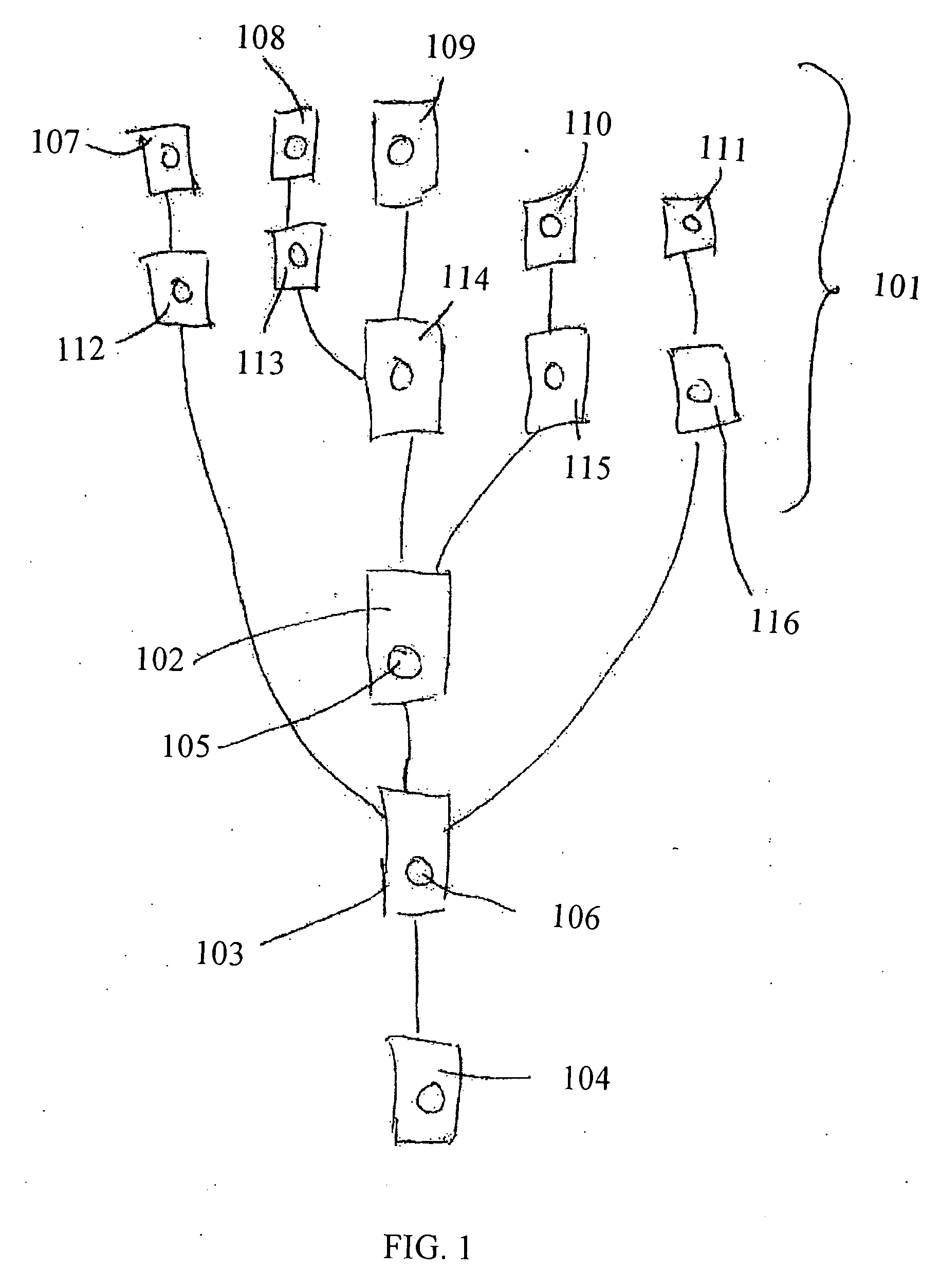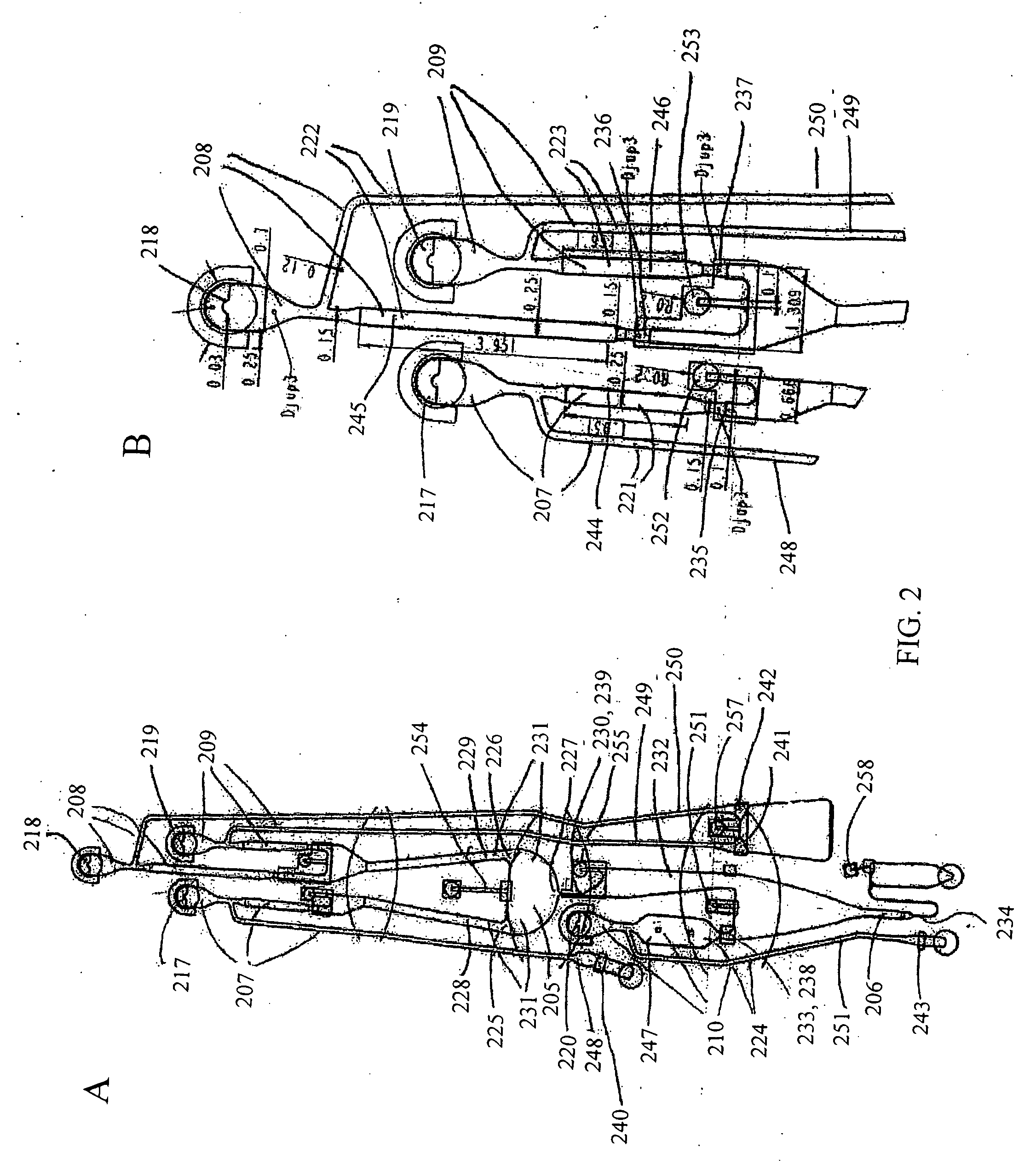Microfluidic assays and microfluidic devices
- Summary
- Abstract
- Description
- Claims
- Application Information
AI Technical Summary
Benefits of technology
Problems solved by technology
Method used
Image
Examples
experiment 1
Assay of Substance P
[0162] Samples containing substance P (0-2000 pg / ml) (10 μl; cat.#80-0206 Assay Designs, Inc. MI, USA) were mixed with substance P-ALP conjugate (10 μl; cat.#80-0266 Assay Designs, Inc. MI, USA) and polyclonal rabbit anti-Substance P (10 μl; cat.#80-0267 Assay Designs, Inc. MI, USA) in microtiter plate (MTP) wells. After incubation at 4° C. overnight, samples (1 μl) were withdrawn from the MTP and introduced into the CD via individual inlet ports (318a-h) and processed in the instrument given above. Upon spinning of the device [Anti-Substance P / Substance P-ALP]- and [anti-Substance P / Substance P]-complexes were captured in miniaturized affinity columns / capturing microcavity (306a-h) in the CD. The affinity columns were created by immobilization of biotinylated goat anti-rabbit IgG (H+L, DS grade, Zymed Laboratories, Inc. CA, USA) on streptavidin coated beads essentially as outlined in WO 04083109 (Gyros AB). The columns were washed four timed with phosphate buf...
experiment 2
Assay of Human Neuropeptide Y
[0164] Samples containing human Neuropeptide Y (NPY) (Cat#: 049-03, Phoenix Pharmaceuticals, Inc., CA USA) were mixed with di-biotinyl-lys-NPY (Cat#: B-049-23, Phoenix Pharmaceuticals, Inc., CA USA) and rabbit anti-NPY(Cat#: G-049-03, Phoenix Pharmaceuticals, Inc., CA USA). The reaction mixture contained phosphate buffered saline (PBS) pH 7.4 and 0.1% (w / v) bovine serum albumin. After incubation in a well of a microtitre plate (MTP) at room temperature the formed product, biotinylated NPY / antibody was captured in the streptavidin coated beads packed as columns in the CD microfluidic device in the same manner as in experiment 1. The column was then treated with Alexa 647-labeled goat anti rabbit IgG antibody solution (1:500 dilution) and subsequently washed with PBS buffer containing 0.01% (v / v) Tween 20. Captured and concentrated biotinylated NPY / antibody complex was quantified by means of a laser induced fluorescence detector. The result for a series ...
experiment 3
Procedure for Kinase Assay in a CD:
[0167] Below follows a schematic description of how kinase assays may be performed in a microfluidic device comprising the microchannel structure given in FIG. 2 with commercially available reagents. The method is based on the use of a biotinylated substrate that may be a peptide or a protein. The method uses an antibody directed towards a phosphorylated substrate (product P). For tyrosine kinase assays anti-phoshotyrosine specific antibodies are commercially available. They recognize all phosphorylated tyrosines, regardless of the amino acid surrounding them.
Kinase Activity Determination: Assay Strategy
[0168] Sample: Kinase [0169] Reagent: Biotinylated peptide (or protein)+Alexa labeled anti-phosphotyrosine (or anti-phospho-serine / threonine)+ATP+Mg2+. [0170] Sample is mixed with reagent and incubated in the reaction microcavity RM (205). Phosphorylated biotinylated product is formed as a result of kinase activity. The phosphorylated product f...
PUM
 Login to View More
Login to View More Abstract
Description
Claims
Application Information
 Login to View More
Login to View More - R&D
- Intellectual Property
- Life Sciences
- Materials
- Tech Scout
- Unparalleled Data Quality
- Higher Quality Content
- 60% Fewer Hallucinations
Browse by: Latest US Patents, China's latest patents, Technical Efficacy Thesaurus, Application Domain, Technology Topic, Popular Technical Reports.
© 2025 PatSnap. All rights reserved.Legal|Privacy policy|Modern Slavery Act Transparency Statement|Sitemap|About US| Contact US: help@patsnap.com



